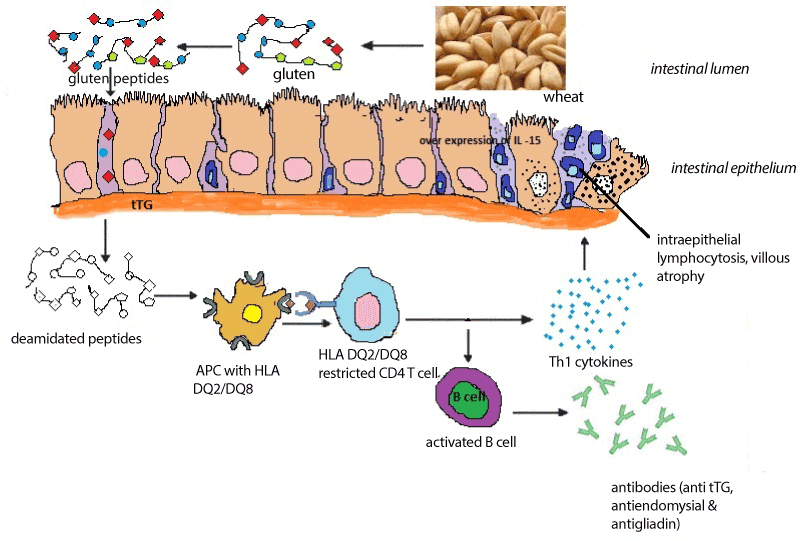
 |
| Figure 2: Illustrating mechanism of CD pathogenesis: Ingestion of proline rich gluten by genetically susceptible individual results in the generation of gluten peptides. Since, these peptides are resistant to brush border proteases; they enter lamina propria and undergo crosslinking and deamidation by tTG. Deamidated peptides possess more immunostimulatory epitopes and are present to gluten reactive population of CD4 T-cell by HLA DQ2/DQ8 heterodimer expressing APCs. Further, activated T-cells produce auto antibodies and other immuno components that lead to tissue damage which includes increased permeability, dysfunction of intestinal tight junction, infiltration of IELs, flattening of villi, inflammation and malabsorption as in late phase of pathogenesis of CD. (This figure is created by authors and team based on the data collected from references cited in the present review article). |